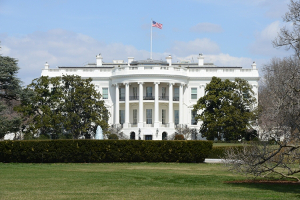The Trump administration has lobbied for “Buy American, Hire American” ever since he came into office and now the crack down on the abuse of H1B visas has just been pushed into the limelight, causing much debate and reporting about it. How did it come to this? We take a look at how the Trump administration came about with this proposal and the future it might hold for if it does come to fruition through this H1B visa timeline.
What is the H1B visa?
For starters, let’s talk about the H1B visa itself. This visa allows companies to temporarily hire foreign workers with high degrees in the field they study to come work for them in high class occupations such as IT, accounting, and engineering, among others. H1B visas can last up to three years and can be renewed for another three years. Not only that, but they are in extremely high demand; over 200,000 applicants have already sent applications for the treasured visa. The government only issues out 85,000 H1B visas, with 20,000 of them reserved for those with masters degrees or higher. The visas, currently, are distributed through random lottery rather than deciding which applications are the best. This has led to some doubt that the process can be called “legitimate,” though it is still currently up for debate. Due to the visas being easily abused, President Trump has made it his goal to crack down on the abuse through his executive order, “Buy American, Hire American.”
The Trump Administration
To understand how the executive order came about to change the H1B visa timeline, we must first look at the Trump administration from the very beginning. Trump began running for presidency during the 2016 election and won through electoral votes rather than the popular vote, which then led to a series of controversy and protests for his election. In his first week alone, Trump signed six executive orders ranging from interim procedures in preparation of repealing Obamacare to withdrawing the United States from the Trans-Pacific Partnership. Since then, his administration brought with it changes in immigration, as well as in business and finance first and foremost. Some of his most well known changes involve building a wall between Mexico and the United States, the aforementioned executive order to slowly repeal Obamacare, the signing of the Tax Cuts and Jobs Act of 2017, and other issues on foreign policy. More H1B visa timeline changes continue to arise as his presidency goes on, which include his executive order known as “Buy American, Hire American.”
“Buy American, Hire American”
On April 18, 2017, Trump signed an executive order known as “Buy American, Hire American,” which urged for stricter laws on entry into the United States for employment. This changed the rules laid out so that H1B can only be given to highly paid and highly skilled workers. After that, in October that same year, there was an increase of scrutiny in the visa extension applications, which cut down the number of applicants significantly. Then in December of 2017, Trump repealed an Obama administration rule that allowed the spouses of H1B workers to find work in the United States, which affected those with the visas significantly. And just recently, in February, Trump launched a rule that had companies submit details of their employment with their employees, ensuring that the employees weren’t paid for while they weren’t working, called “benching.” It is here, in this H1B visa timeline, that sparked much debate between other companies and foreign workers.
Debates
The H1B visa Trump is expecting to change policies on has been met with much debate and scrutiny among companies. As this will hit Indian outsourcing firms the hardest due to more than 70% of those who obtain the H1B visa being Indians, there are several news articles appearing on the Internet that oppose this decision. Some of these articles are directly making their opinions known on this new policy, declaring it to be “unfair.” Other news articles that support the position point out that this will cut back on the abuse of the visas, especially if the company continues to “bench” foreign employees and not pay them for it. The recent policy memo has ignited opinions on both sides and there seems to be no end to the animosity. What will become of the “Buy American, Hire American” executive order remains to be seen, however.
Beeraj Patel, Esq.
Latest posts by Beeraj Patel, Esq. (see all)
- How Immigration Attorneys Fight for Your Rights - July 15, 2024
- Why Green Cards Expire and How to Renew Them - July 1, 2024
- How PERM Labor Certification Opens Doors to Permanent Residency - June 24, 2024
